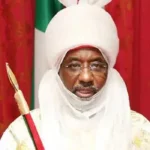Mrs. Temitope Mark-Odigie
Introduction
When assumptions and sentiments are adopted as core values of a given society, such that it controls behaviour and defines the relationships of people within a given space, then social construct is taking place. These constructs are not natural; they are reinforced by a collective to a level where it becomes normalised and accepted. From gender roles, beauty, racial controversies, success, and power, these ideals are all socially fabricated. One tool that promotes these constructs is broadcasting. Broadly defined as an instantaneous and simultaneous medium for disseminating information, broadcasting is considered potent for creating, reinforcing, and changing these constructs.
This tool covers traditional formats like radio and television as well as contemporary digital channels including YouTube, TikTok, podcasting, and streaming services. The constant flow of selected material affects people’s view of others and themselves, which in turn shapes the activities of societies.
Drawing from my experience in the media space, this article explores how the methods of broadcasting influences social constructs backed with empirical evidence and critical reflections on how it can be leveraged to an advantage.
Broadcasting as a Mirror: Reflecting and Molding Societies
One of the first realizations in my time as a host on Your View was how ingrained the media is in informing public opinion—particularly with respect to gender and power. With political discussions, viewers would routinely react with astonishment or even pushback towards women expressing assertive opinions about national issues. With time, though, and with persistence and integrity in political standpoints in producing content, reactions changed. Now, women’s voices on our station are met with greater openness and respect, a testament to the power of broadcasting to normalize new social narratives by repetition and authenticity.
Gender role definition in Nigerian media remains to emphasize the old stereotypes—nurturers, seductresses, or victims. Yet, with programmed interventions and aware framing, you can push in some different storylines. We’ve deliberately featured women in business, politics, and science and technology at On Your View, challenging the oversimplification of what women can and want to do. The ripple effect of this portrayal can be seen in the testimony from youth viewers who report that such representation makes their aspirations seem legitimate and attainable.
In the same vein, broadcasting also plays a significant role in the social construction of wealth and who is perceived as having the ability to achieve it. In Nigerian media, wealth has traditionally been portrayed as a result of inheritance, political favour, or “luck.” To refute this idea, I started The Game of Money Conference in 2020. By using YouTube and other platforms to broadcast this event, financial literacy content based on real-world tactics and case studies of entrepreneurs was widely disseminated. What began as a conference swiftly transformed into a movement backed by the media, as attendees—especially women—shared how the information changed their perspective from one of dependency to one of financial agency.
In a similar fashion, the Real Estate Mastery and Mentorship Program (REMMP) was designed to demystify the process of creating wealth through real estate by employing storytelling formats that made the information easily understandable. By airing not just knowledgeable insights but also personal testimonies of ordinary Nigerians building wealth, we reinforced a new narrative: wealth is buildable, and the tools are learnable.
Beauty and Identity: Subtle Shaping through Imagery
Broadcasting does more than just tell us what to think; it shapes how we see ourselves. As someone in the media, I’ve felt the weight of trying to fit into those broadcast-friendly beauty standards—think lighter skin, Eurocentric features, and specific body types.
The “Your View” show is particularly created to highlight social views and amplify the voices of women. On each episode, four different women from diverse walks of live, converging to give impactful insights to issues, meeting at a point of alignment without killing one for another. Three years into the show, I challenged conventional TV standards for women – I had my hair cut down and basked in my natural curls. Years down the line, this move came with admiration and stood as a major force of influence among many Nigerian women who now took to fitting in their natural hair looks without feeling less confident. There were times in my career when producers and advertisers hinted at changes I could make to better align with commercial expectations. It was crucial for me to push back against that pressure and stay true to my authentic self.
Over the years, I’ve leveraged my platforms to challenge those narrow beauty ideals, urging women to celebrate their uniqueness and African roots. Through conversations on-screen and interactions on social media, I tackle issues like skin-lightening, body image, and self-esteem, shedding light on how much our identities are shaped by the media we consume.
The Role of Algorithms and New Media in Construct Reinforcement
While traditional broadcasting has its gatekeepers, digital media is largely driven by algorithms. Content that’s sensational, controversial, or emotionally charged tends to gain traction—often regardless of its accuracy or social significance. As a digital content creator, I’ve noticed how the algorithm’s push for virality often favors stereotypes, drama, or divisiveness. Striking a balance between creating engaging content and being socially responsible is no easy feat. However, in initiatives like The Business of Influence, I’ve collaborated with younger broadcasters and influencers to craft content strategies that focus on positive narratives without sacrificing reach. This mentorship is grounded in the belief that even within the constraints of algorithms, meaningful content can flourish with the right storytelling approach.
Broadcasting for Reimagining Society
Broadcasting, as I’ve known it, has served not only as a medium for entertainment and information but also for healing and transformation. Issues such as motherhood, domestic violence, and infertility, which were once taboo subjects, now sit comfortably on the line-and the weight of conversation moved onto several media platforms-including that of mine. Viewers’ comments on the humanitarian and educational aspects generally reflect the content’s potential to normalize empathy and inclusivity within the medium. It is not only what is said that makes a difference; it is also who says it. The presence in media spaces of more women and other diverse identities and underrepresented voices themselves becomes a revolutionary act against the dominant constructs. It is commitment enough for me to use my platform for the making of such spaces not just for visibility but for institutional change.
Conclusion
Broadcasting is no neutral tool; it is formative in itself. Depending on the intention with which it is being used, it may reinforce limiting beliefs or demolish them. My journey as a broadcaster has only reiterated that the media, when wielded consciously, serves as both a mirror and a hammer-reflecting society and reshaping it at once.
This is what is very much needed by broadcasters presently all across Africa. This is beyond entertainment, beyond ratings-offers the possibility for reconstructing social frameworks that are more inclusive, empowering, and reflective of our combined humanity.
Mrs. Temitope Mark-Odigie, a distinguished TEDx Speaker, Communication Expert, Business Strategist, and Real Estate Coach, has a proven track record of inspiring transformation through education, advocacy, and practical solutions.






